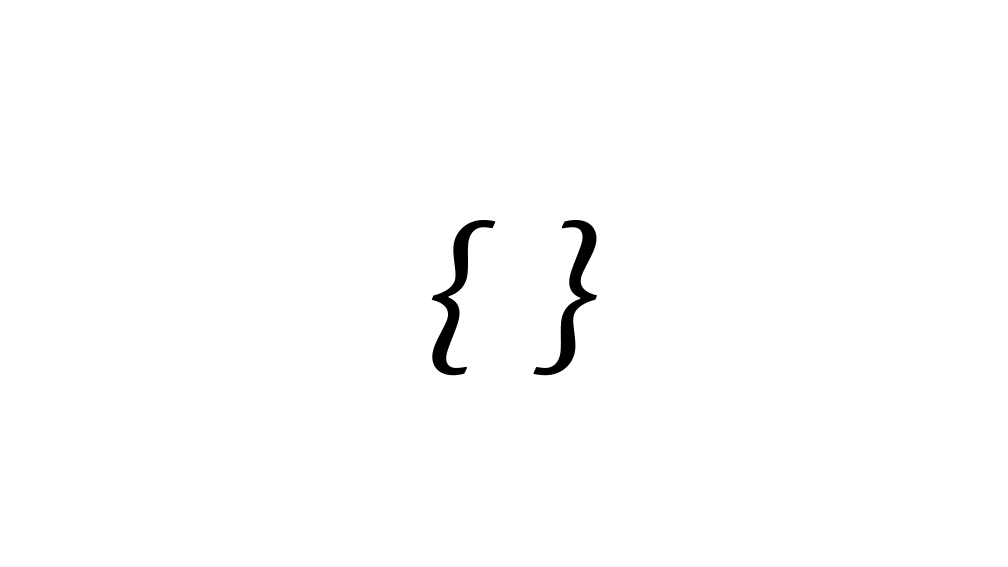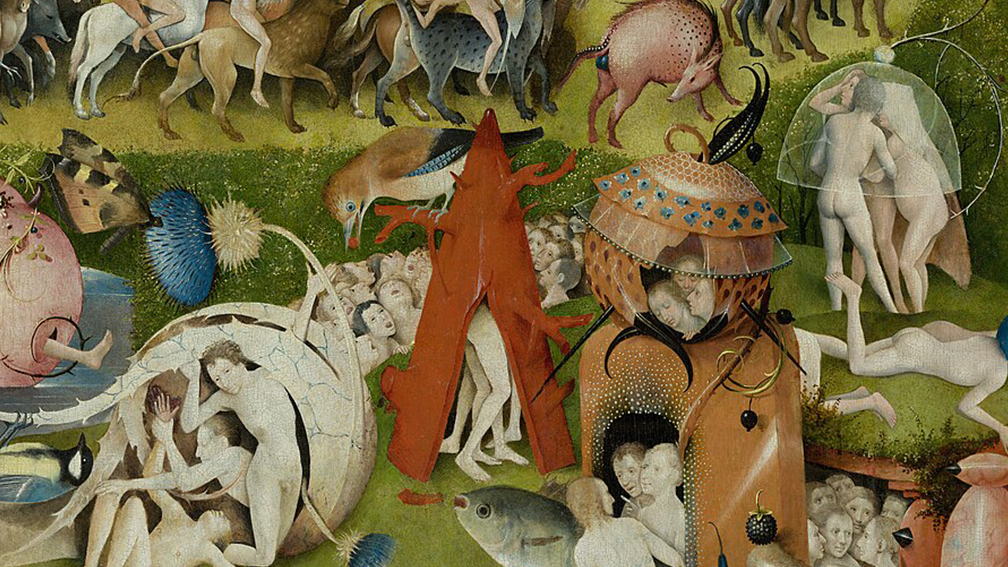Quotas pile up— to seize, detain, destroy. Texts and photo albums are trawled by border agents. They have a seeing stone, and know your face. Pleasure-domes and corporate campuses dot the western expanse; go south and find desolate server farms condemned to eternal thirst. Flaming screens, flaming cities, flaming forests. Distant cries of prophet CEOs and their acolytes trying to summon an intelligence they believe is God. An Iron Dome through which demons deliver hellfire from the skies; more specifically, a General Atomics MQ-1 Predator equipped with an AGM-114 Hellfire. Data and flesh transubstantiated. Electronic pulse animating our dance to an oblivion.
It’s bad right now. Fucked in a way I can’t quite fully grasp. When I look for comfort, there’s little to be found— least of all in the writing so often grouped under the genre of “tech writing.” Critically minded magazines and editorial sections have shuttered in recent years, leaving behind a sad mix of thinly-veiled advertorials and hype-cycle reportage trying to keep up with the phallic Bezos rockets taking Teslas, crypto, AI, or whatever else to the moon. Even the critical spaces that remain have done so as exhausted watchdogs, diligently moving to the sober rhythms of positivism, empiricism, and pragmatism that confer legitimacy in our techno-culture. What is overlooked is the absurd heart pulsing under it all. Post-enlightenment logics can only get us so far. After all, Peter Thiel dreams about the Antichrist.
When I have come across some semblance of comfort, it has been in the strange and uncanny. One painting in particular has lodged itself into my imaginary as of late: Hieronymus Bosch’s Garden of Earthly Delights. To lose yourself in the painting is to lose yourself in a grotesque carnival much like our own. Monstrous creatures lumber about, consuming us. Ecstasy intermingles with dread. Bodies turn into things hardly recognizable. Rapture, apocalypse, revelation loom somewhere on the periphery. Through it all, it remains unclear whether we are supposed to be glimpsing paradise lost or hell becoming, or whether there’s any difference.
It mirrors my feelings about our present technologized moment. After all, despite what we so often assume, technology isn’t synonymous with the latest gadget, or digital this-and-that. It’s method, technique, a way of making (non)sense of the world; it’s fleshy and bloody and earthly and divine; a space where haunting spectra linger beyond the broken link. If language was one of our first technologies, then it makes no sense that technology writing doesn’t give rise to more poetry. If our bodies were an ur-technic, the originary prosthesis that served as site to all other tools and techne, then shouldn’t technology writing know how to dance? Chimeric creatures abound for those willing to take notice.
Contrary to classical interpretations of the painting, which read a causal chronology of past paradise to present sin to future hell, art historians have suggested that the triptych’s final panel is not a vision of the future but instead a reading of the present. It’s less a moralistic transcription of Biblical events than it is a consideration of the horrors of the then 16th century present as a reversal, a half-life, a decaying trajectory of humanity’s technics cast as nuclear shadow. Faced with our 21st century horrors, we ask how the garden might appear to us today.

The central panel of Bosch’s piece is the contrapositive of Eden: not the condition of man before knowledge, but the one that remains after knowledge has been externalized, technologized, rendered monstrous and machinic. Where Eden stages a boundary—what not to eat, what not to know—Bosch paints the continuum of that boundary’s collapse. The world, once known and therefore technologized, cannot return to its prelapsarian whole. This is what the name of our magazine, Empty Set, tries to speak to. The empty set contains nothing but is not nothing: it is a structured nothing, a something-nothing, a ground-zero which paradoxically marks absence through presence. Eden is often read as pure presence, but it is really defined instead by its absence—of fruit withheld and knowledge forbidden. Eden is not the abundance of pleasure but the absence of want. It is a negative architecture, the brackets, the maw you sense opening just behind you.
Rot is the moment of expulsion, the metabolization of the world into a state of perpetual decay. The Eden panel bears preserved fruit—likely laced with Sorbic acid and sorbate compounds to prevent microbial penetration, ascorbic acids to forestall oxidation—but the Garden is resplendent. This fecundity, however, is also what moves us towards decomposition. The final panel is a judgement to come that has already happened. Before us, before even Eden. The triptych is a loop, taking us back to a time underneath its beginnings, just as our own futures are powered by plant matter that died eons ago, minerals and elements made from the carved out hearts of dying stars.
Writing in the dust of this critical and techno-cultural landscape, it’s only fitting that our first issue takes on decay. Though the millenarian promise of technology is one of eternity (eternal life, never-ending access to information, etc. etc.), it’s rot that undergirds our world today: brainrot, entropy, planned obsolescence, 404 errors, poor images, lossy compression, nutrient-rich humus, carbon-rich biomatter turned oil and coal. It is a process that encapsulates the short-sighted excesses of our techno-culture while also remaining a potential force we might channel into new hopes. After all, without this decompositional process, there could be no regrowth, nothing underfoot for life to take hold of.

Take a walk through our decaying Garden then. Begin with Suspended Reason’s reflection on the paradox at the concept’s core, how the foundational breach that brings about death is the very condition of life. The inseminated fruit rots, liquefying into Luke Davis’ fever dream of discovery and empire; meanwhile the rhizomatic topology of our own empire comes to life through basalt & sm downer’s reconstruction of the Bay Area. But empire always crumbles, leaving behind its gloaming ruins, where one midwife searches for shunned knowledge in Bri Di Monda’s epistolary piece. A message is left behind for the future. Then it’s shot into space by Zach Peckham as a golden arrow in search of immortality.
If it’s immortality you want, then it’s immortality you’ll get. The cost is just one son-turned-blood-bag— at least if you’re the millionaire Bryan Johnson, who Kelly Pendergrast takes to task in her intravenous analysis of bloodsharing. But in the inevitable event that death meets Johnson, as it will all of us, what is it we’ll leave behind? Nika Simovich Fisher meditates on this question by way of her friend’s unexpected suicide and his decision to erase his web presence beforehand. The question of what is preserved and forgotten continues through Celine Nguyen and her exploration of the counter-archival practices being deployed for digital art, and Michael Thomsen’s experience sailing on the Ship of Theseus that is Destiny 2.
After all, it isn’t easy to deal with disappearance, especially when it’s an obsession that vanishes. That can drive you to the brink, as Amanda Chen depicts in her story of a stan and a streamer. However, the gamer who has fallen into the world of dating-simulators in Chloe Yan’s piece might argue that it’s not just cold obsession, but love itself we find through the screen. Rob Horning isn’t sold, as he critiques the chatbots that promise us company but really do little more than generate the conditions of our own loneliness. Though who can blame us. Anything to keep us from the overwhelming boredom that Lauren Collee senses at the edges of our overstimulated mediascape, a garbage dump increasingly inundated with AI slop that Michelle Santiago Cortés unveils in all its Gothic horror. Oozing, liquified matter that Terry Nguyen dutifully registers, tracks, and documents.
Still, one hopes we can find beauty amidst all the abjection. Steffi Cao looks through our cameras, peeling off her skin in a desperate search. Sheon Han has overheard engineers saying that we might find it in code itself. If such a thing did exist, it might look like Brandan Griffin’s poems—which evoke the proto-life particulates of some unrealized literary organism. Creation is an uneasy process, as theoretical architect Patrick Danahy and artist Rachel TonThat well understand. What role might new technologies play? Or our dreams? But first, we must find the right words. No simple task. Thankfully, Emma Heath has offered a dictionary of decay to guide us through the end of the world, the apocalypse of Zachary Loeb’s past. Yet even the right words decay, become calcified, carbonized like Michael Wang’s ancient plant matter. By the end, we’ll have returned to dust, but through the rot, we hope something else might have taken hold. ■
.jpg)


